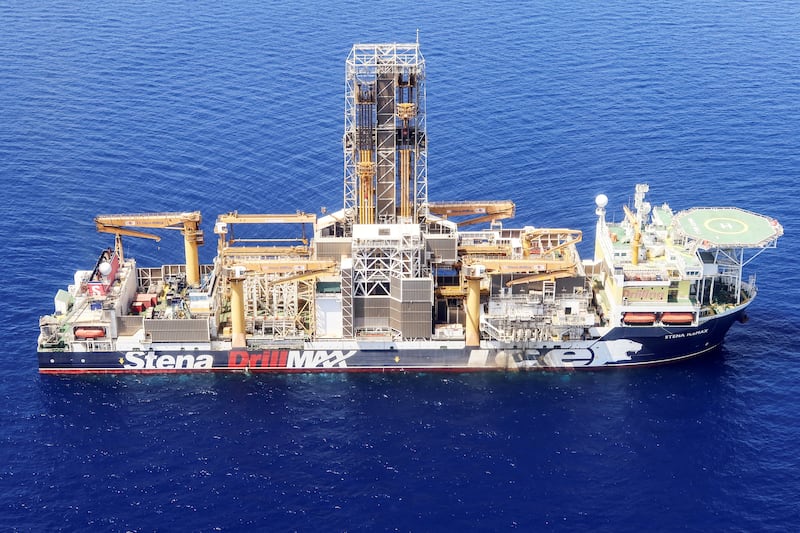For a region written off as devoid of petroleum until a decade and a half ago, the East Mediterranean has attracted a remarkable Rolodex of top international companies.
Adnoc joined that club on March 28, 2023, when it teamed up with BP to offer to buy half of NewMed Energy, an Israeli gas company. To make the most of this deal, the Abu Dhabi national champion must negotiate a complex diversity of corporations, countries and borders.
Adnoc and BP will form a new joint venture to develop gas outside the UAE, with this transaction as its first step.
NewMed’s main asset is its 45.34 per cent holding in Leviathan, the largest gasfield in Israel and the second-biggest in the eastern Mediterranean. It also holds 30 per cent of the Aphrodite gasfield offshore Cyprus.
The Adnoc-BP partnership will acquire the free float of NewMed on the Tel Aviv stock exchange, and additional shares from Delek, to own 50 per cent and take the company private. The deal is valued at about $2 billion.
The UAE is already involved in the East Mediterranean’s gas business.
In 2018, Mubadala paid $934 million for 10 per cent of Zohr (BP also holds 10 per cent), the largest gasfield in Egypt. In September 2021, it purchased 22 per cent of the Tamar gasfield, Israel’s second-biggest, for about $1 billion.
Musabbeh Al Kaabi, who took up the role of heading Adnoc’s international growth business in January, was previously chief executive of Mubadala Petroleum and Petrochemicals during 2017-2020.
The East Med gas story only really started with the discoveries of Tamar in 2009, Leviathan in 2010 and Aphrodite in 2011. It has gathered momentum as one of the world’s hottest gas exploration plays. About 80 trillion cubic feet have been discovered this century, more than the combined reserves of the EU, UK and Norway.
Last week, in a paper co-authored with Shangyou Nie for the Columbia University Centre on Global Energy Policy, we pointed out that, following Russia’s invasion of Ukraine and the near-total shut-off of Russian westward gas exports, any nearby alternatives should be enticing to Europe. The question is how to get to market.
So far, the Israeli offshore gas supplies domestic needs and some is sent to Egypt and Jordan.
Cyprus has not yet managed to get a development going, but Aphrodite has been followed by several other significant finds.
Egypt, meanwhile, has two under-utilised terminals for export of liquefied natural gas (LNG), but although the area’s largest producer, struggles to meet domestic demand. After Zohr, found in 2015, it has made only a few moderate-sized discoveries.
Crisis-hit and energy-starved Lebanon finally resolved a maritime border dispute with its southern neighbour in October and drills the much-awaited Qana prospect in the fourth quarter of this year.
Palestine, despite having untapped gas offshore Gaza, relies on Israel for electricity and may start buying Israeli gas too.
There are essentially three options to get to Europe.
First, send as much gas as possible to Egypt, liquefy it at the plants at Idku (near Alexandria) and Damietta, and export by tanker.
Second, build a new LNG facility, either floating, or onshore, probably in Cyprus. American major Chevron, which operates Tamar, Leviathan and Aphrodite, has pushed the floating LNG option.
Third, build a pipeline, which could run under-sea to Crete and on to mainland Greece, then connect to south-east Europe and Italy. Last month, Italian utility Edison announced it would make a final investment decision this year on what it calls the “Poseidon Pipeline”.
So, what is holding up these projects, given the urgency?
First is the region’s bewildering complexity. Three continents collide here, geologically and politically.
The rocks have given up many of their secrets, but the politics encompasses disputed borders, particularly with Turkey, the divided island of Cyprus, civil war in Syria, the government shambles in Beirut, and the Israeli-Palestinian conflict.
Second is the lack of urgency and interest from Europe, which struggles to think and act strategically, particularly when it concerns fossil fuels. A pipeline or LNG plant which will operate more than 20 years seems problematic when the bloc is meant to reach net-zero carbon by 2050 — though this paradox is more apparent than real.
Italy, France and Greece, as well as EU member Cyprus, are deeply involved in the East Med, but often at cross-purposes or in support of their favoured national companies.
Third is the commercial fragmentation. The major oil companies — Shell, BP, Chevron, ExxonMobil, TotalEnergies and Eni, along with Russia's Rosneft — are all present in different countries and assets, and their big egos and corporate strategies are prone to collide. There are also regional players, notably QatarEnergy in Lebanon and Cyprus, and smaller British and Israeli corporations, as well as Edison, part of France’s EDF.
The two UAE giants now span all three key East Med countries. It is a bold move for Adnoc’s first upstream venture, but it benefits from people who know the area well, a highly capable partner, ample finance, and political weight.
Chevron is not active in the UAE’s upstream sector, but all the other majors are, allowing for further creative dealmaking. NewMed could be the platform to take East Mediterranean gas from local to continental prominence.
Robin M Mills is chief executive of Qamar Energy and author of 'The Myth of the Oil Crisis'






